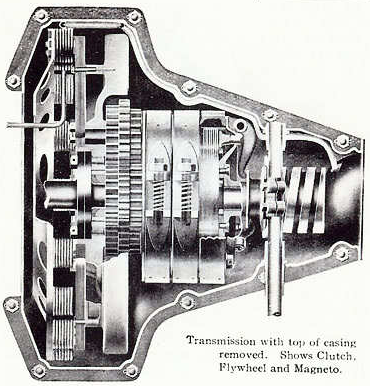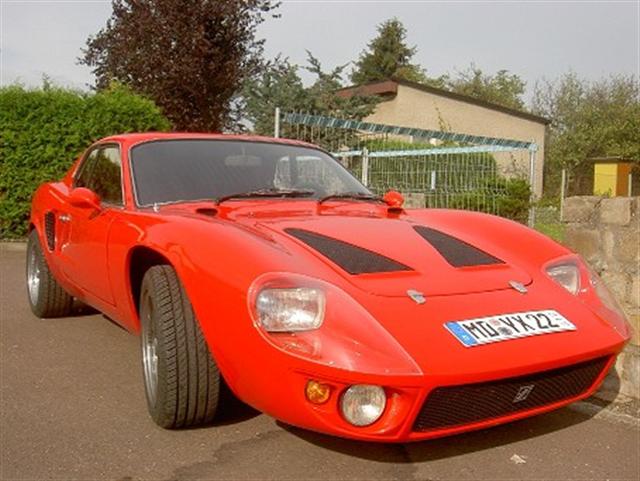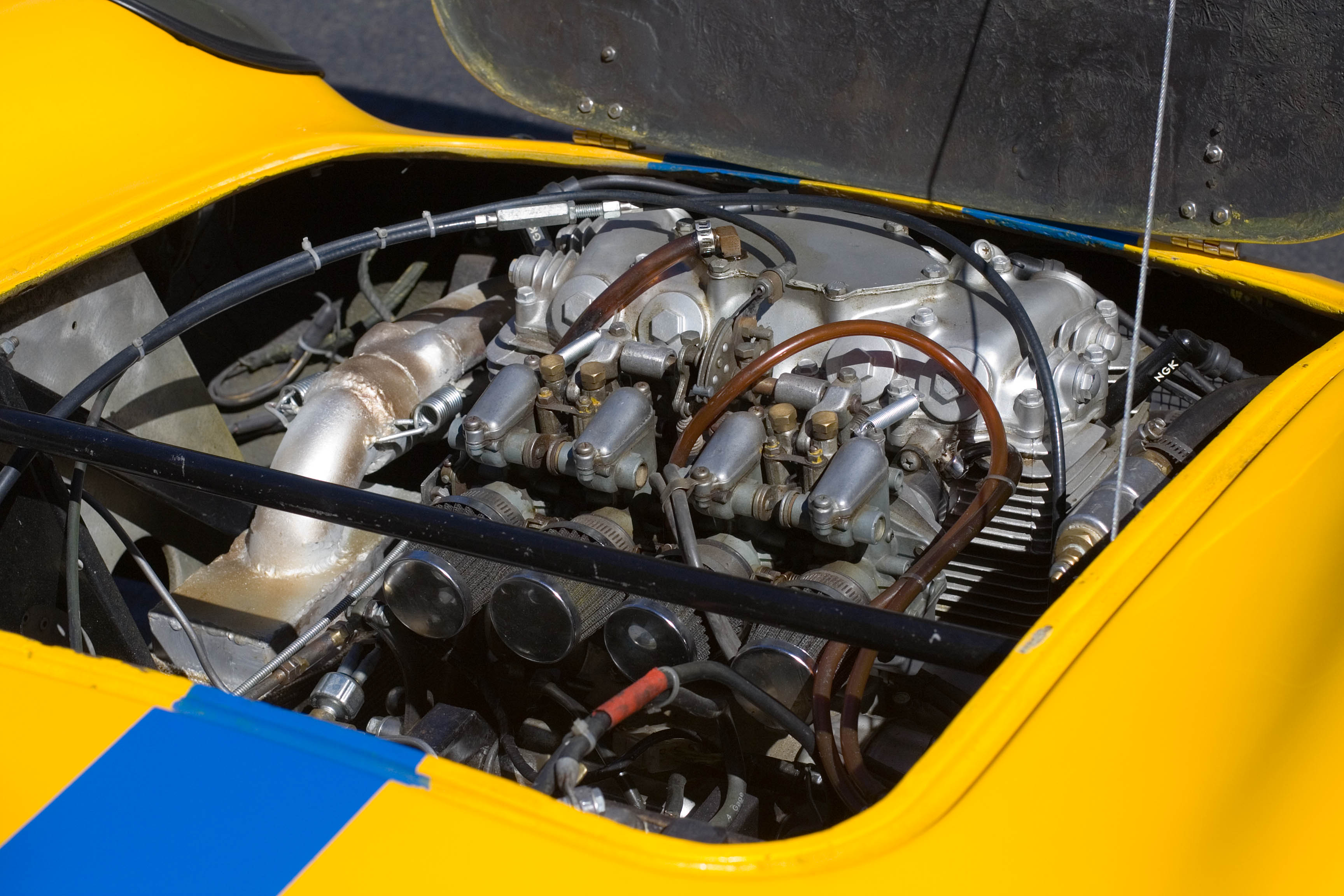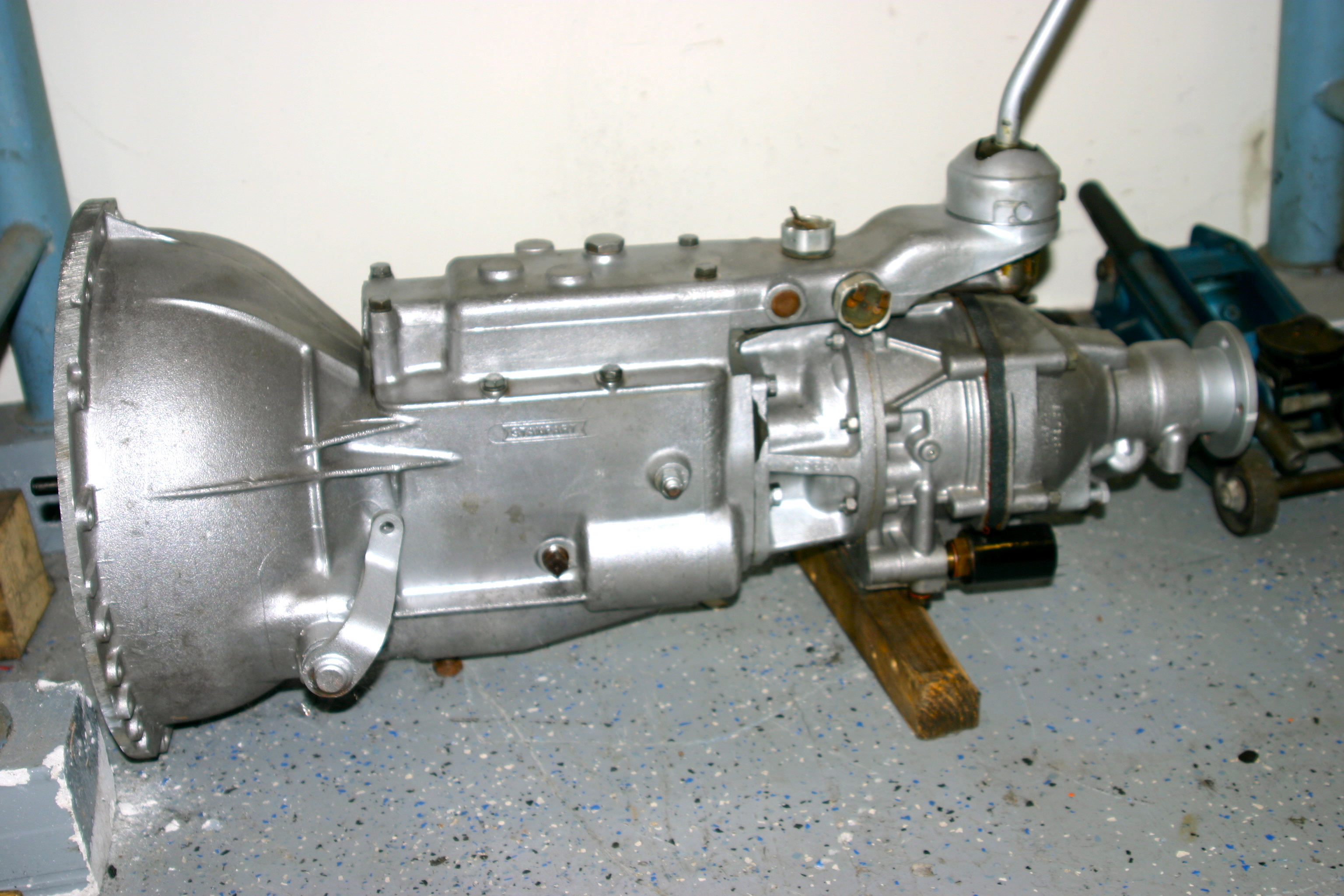|
Ford T9
Type 9 (also, Type N, T9, or T-9) is a gearbox from Ford that was used in Ford Capri 1.6, 2.0 1984 onwards, Capri 2.8 1983 onwards, Ford Sierra 1.6, 1.8, 2.0, Sierra XR4i, Sierra XR4x4 2.8 and the Scorpio 4x4 as well as the US market Merkur XR4Ti and Merkur Scorpio. The Type 9 was Ford's first five-speed, rear-wheel-drive gearbox, and it is based on the four-speed Type E gearbox. The fifth, or overdrive gear, was added to the four-speed gearbox by placing it in the extension housing or tailshaft housing. This made production easier and cheaper but effectively limited torque capacity to 200 lb. ft. or so. The Type 9 is a popular choice for five-speed conversions of older Ford cars such as the Cortina and rear wheel drive Escorts, and also for kit car builders, since it comes with a separate bell housing so it can be easily swapped around. Engines that were originally in FWD layouts are fitted to these transmissions so that they can go into a RWD layout, as in a hot rod engine swap ... [...More Info...] [...Related Items...] OR: [Wikipedia] [Google] [Baidu] |
Gearbox
Propulsion transmission is the mode of transmitting and controlling propulsion power of a machine. The term ''transmission'' properly refers to the whole drivetrain, including clutch, gearbox, prop shaft (for rear-wheel drive vehicles), differential, and final drive shafts. In the United States the term is sometimes used in casual speech to refer more specifically to the gearbox alone, and detailed usage differs. The transmission reduces the higher engine speed to the slower wheel speed, increasing torque in the process. Transmissions are also used on pedal bicycles, fixed machines, and where different rotational speeds and torques are adapted. Often, a transmission has multiple gear ratios (or simply "gears") with the ability to switch between them as the speed varies. This switching may be done manually (by the operator) or automatically (by a control unit). Directional (forward and reverse) control may also be provided. Single-ratio transmissions also exist, which simply chan ... [...More Info...] [...Related Items...] OR: [Wikipedia] [Google] [Baidu] |
List Of Ford Transmissions
List of automatic, dual clutch automatic, and manual transmissions and transaxles used in vehicles manufactured by Ford Motor Company. Automatic * 1950–1965 Ford-O-Matic * 1958–1979 Cruise-O-Matic ** MX/FX ** 1968–1981 FMX—A hybrid of the FX and MX ** 1964–1981 C4 *** Most small block V8 powered cars of the 1960s and 1970s in the North American market ** 1966–1996 C6 *** Most big-block V8 powered cars/trucks of the 1960s and 1970s in the North American market, All Fseries trucks without O/D, 80 thru 96 (97 For F250HD, F350, and F-Superduty models) ** 1974–1989 C3—Light-duty, smaller than the C4 ** 1982–1986 C5—Improved C4, with a lock-up converter ** 1985–1994 A4LD—C3 with overdrive ** 1989–1996 E4OD—C6 with overdrive ** 1998–2004 4R100—Replaces the E4OD transmission ** 1995–2001 4R44E—Electronically controlled A4LD, light-duty ** 1995–1997 4R55E—Electronically controlled A4LD, heavy-duty * 1997–Current 5R44/5R55 Series—5-sp ... [...More Info...] [...Related Items...] OR: [Wikipedia] [Google] [Baidu] |
Ford Capri
The Ford Capri is a fastback coupé built by Ford of Europe, designed by Philip T. Clark, who was also involved in the design of the Ford Mustang. It used the mechanical components from the Mk2 Ford Cortina and was intended as the European equivalent of the Ford Mustang. The Capri went on to be highly successful for Ford, selling nearly 1.9 million units in its lifetime. A wide variety of engines were used in the car throughout its production lifespan, which included the ''Essex'' and ''Cologne'' V6 at the top of the range, while the ''Kent'' straight-four and ''Taunus'' V4 engines were used in lower-specification models. Although the Capri was not officially replaced, the second-generation Probe was effectively its replacement after the later car's introduction to the European market in 1994. While Ford marketed the car as "Ford Capri – The Car You Always Promised Yourself", the British magazine '' Car'' described the Capri as a "Cortina in drag". History ... [...More Info...] [...Related Items...] OR: [Wikipedia] [Google] [Baidu] |
Ford Sierra
The Ford Sierra is a mid-size car or large family car manufactured and marketed by Ford Europe from 1982-1993, designed by Uwe Bahnsen, Robert Lutz and Patrick le Quément — and noted for its aerodynamic styling producing a drag coefficient of 0.34, a significant improvement over its predecessors. The Sierra debuted at the 1982 British International Motor Show in Birmingham,Ford Sierra '''', 6 November 2007 shortly followed by the 1982 Paris Salon de l'Automobile.Salon de l'auto '' [...More Info...] [...Related Items...] OR: [Wikipedia] [Google] [Baidu] |
Merkur XR4Ti
The Merkur XR4Ti is a performance-oriented 3-door hatchback sold in North America from 1985 to 1989. A product of the Ford Motor Company, the car was a version of the European Ford Sierra adapted to U.S. regulations. The XR4Ti project was championed by Ford vice president Bob Lutz. History The Sierra was the successor to Ford of Europe's Cortina/Taunus and was developed while Lutz was chairman of Ford's European operations. Due to financial restrictions the decision was made to keep the front-engine, rear-wheel-drive layout of its predecessor and pursue improved fuel economy through advanced aerodynamics. The Probe III design study unveiled at the 1981 Frankfurt Motor Show indicated the direction Ford would take with the Sierra. Responsibility for the Sierra design was handled by vice president for design Uwe Bahnsen and chief stylist Patrick le Quément. The Sierra was released in Europe in September 1982, and the performance-oriented XR4i appeared in 1983, slotted into the l ... [...More Info...] [...Related Items...] OR: [Wikipedia] [Google] [Baidu] |
Merkur Scorpio
The Merkur Scorpio is a mid-size luxury car that was marketed by the Lincoln-Mercury division of Ford for the 1988 and 1989 model years through its Merkur sub-brand. Slotted above the Merkur XR4Ti in the model line, the Scorpio served as the flagship of Merkur. A captive import from Ford of Europe, selected Lincoln-Mercury dealers marketed the Scorpio in the United States and Canada. A near-direct counterpart of the Ford Scorpio Mk I ( Ford Granada Mk III in the United Kingdom), the Merkur Scorpio was developed to give Lincoln-Mercury a competitor against European executive cars sold in North America, including the Audi 100, BMW 5-series, Mercedes-Benz 190E, Saab 9000, Sterling 827, and Volvo 740/760. Following the 1989 model year, Ford ended imports of the Scorpio, closing down the Merkur brand. Lasting only for two model years, the Merkur Scorpio is among the shortest-lived Ford Motor Company nameplates in modern history. Along with unstable pricing due to fluctuating exch ... [...More Info...] [...Related Items...] OR: [Wikipedia] [Google] [Baidu] |
Ford Cortina
The Ford Cortina is a medium-sized family car that was built initially by Ford of Britain, and then Ford of Europe in various guises from 1962 to 1982, and was the United Kingdom's best-selling car of the 1970s. The Cortina was produced in five generations (Mark I through to Mark V, although officially the last one was only the Cortina 80 facelift of the Mk IV) from 1962 until 1982. From 1970 onward, it was almost identical to the German-market Ford Taunus (being built on the same platform), which was originally a different car model. This was part of Ford's attempt to unify its European operations. By 1976, when the revised Taunus was launched, the Cortina was identical. The new Taunus/Cortina used the doors and some panels from the 1970 Taunus. It was replaced in 1982 by the Ford Sierra. In Asia and Australasia, it was replaced by the Mazda 626-based Ford Telstar, though Ford New Zealand did import British-made complete knock-down kits of the Sierra estate for local assembly ... [...More Info...] [...Related Items...] OR: [Wikipedia] [Google] [Baidu] |
Ford Escort (North America)
The North American version of the Ford Escort is a range of cars that was sold by Ford Motor Company, Ford from the 1981 to 2003 model years. The direct successor of the Ford Pinto, the Escort also largely overtook the role of the European-imported Ford Fiesta (first generation), Ford Fiesta as the smallest vehicle in the Ford model line in North America. Produced across three generations, the first generation was a Subcompact car, subcompact; the latter two generations were compact cars. Becoming highly successful in the marketplace, the Escort became the best-selling car in the United States after 1982, a position it would hold for much of the 1980s. Produced across three generations, the Escort was the first world car developed by Ford, with the first-generation American Escort designed alongside Ford of Europe, who transitioned the Escort Mk III to front-wheel drive. During its production, the Escort also underwent a wide use of platform sharing and rebranding. The first ... [...More Info...] [...Related Items...] OR: [Wikipedia] [Google] [Baidu] |
Kit Car
A kit car is an automobile available as a set of parts that a manufacturer sells and the buyer then assembles into a functioning car. Usually, many of the major mechanical systems such as the engine and transmission are sourced from donor vehicles or purchased new from other vendors. Kits vary in completeness, consisting of as little as a book of plans, or as much as a complete set with all components to assemble into a fully operational vehicle such as those from Caterham. Related terms There is also a sub-set of the kit car, commonly referred to as a "re-body", in which a commercially manufactured vehicle has a new (often fiberglass) body put on the running chassis. Most times, the existing drive gear and interior are retained. These kits require less technical knowledge from the builder, and because the chassis and mechanical systems were designed, built, and tested by a major automotive manufacturer, a re-body can lead to a much higher degree of safety and reliability. ... [...More Info...] [...Related Items...] OR: [Wikipedia] [Google] [Baidu] |
Engine Swap
In car tuning culture, an engine swap is the process of removing a car's original engine and replacing it with another. This may be a like-for-like replacement, or to install a non-factory specification engine. Typically an engine swap is performed for performance, swapping-in a more powerful engine; however, an engine swap may also be performed for maintenance, where older engines may have a shortage of spare parts, and so a modern replacement may be more easily and cheaply maintained. Swapping the engine may have negative implications on the cars safety, performance, handling, and reliability. For example, the new engine's different weight balance over the axles and the overall weight of the car can adversely affect the vehicle dynamics. Existing brakes, transmission and suspension components may be inadequate to handle the increased weight and/or power of the new engine with either upgrades being required or premature wear and failure being likely. Insurance companies ma ... [...More Info...] [...Related Items...] OR: [Wikipedia] [Google] [Baidu] |
Gear Housing
The gear housing is a mechanical housing that surrounds the mechanical components of a gear box. It provides mechanical support for the moving components, a mechanical protection from the outside world for those internal components, and a fluid-tight container to hold the lubricant that bathes those components. Types of housings A split housing is like a walnut shell, the housing is divided in two parts, and lower part that tie down the Gear Box to the structure, support all the components during the assembly stage and hold the lubrication oil; and the upper part that complete the enclosure and provide mechanical integrity to the Housing. The upper and lower parts of the housing have a mating surface that seals perfectly the housing to avoid oil leaks and fatigue of the housing. A bathtub housing is made on a single piece and have a top opening for servicing the gear box and side opening to accommodate the bearing housing associated to the gear shafts. Have in general a better le ... [...More Info...] [...Related Items...] OR: [Wikipedia] [Google] [Baidu] |
Cast Iron
Cast iron is a class of iron–carbon alloys with a carbon content more than 2%. Its usefulness derives from its relatively low melting temperature. The alloy constituents affect its color when fractured: white cast iron has carbide impurities which allow cracks to pass straight through, grey cast iron has graphite flakes which deflect a passing crack and initiate countless new cracks as the material breaks, and ductile cast iron has spherical graphite "nodules" which stop the crack from further progressing. Carbon (C), ranging from 1.8 to 4 wt%, and silicon (Si), 1–3 wt%, are the main alloying elements of cast iron. Iron alloys with lower carbon content are known as steel. Cast iron tends to be brittle, except for malleable cast irons. With its relatively low melting point, good fluidity, castability, excellent machinability, resistance to deformation and wear resistance, cast irons have become an engineering material with a wide range of applications and are ... [...More Info...] [...Related Items...] OR: [Wikipedia] [Google] [Baidu] |






.jpg)


